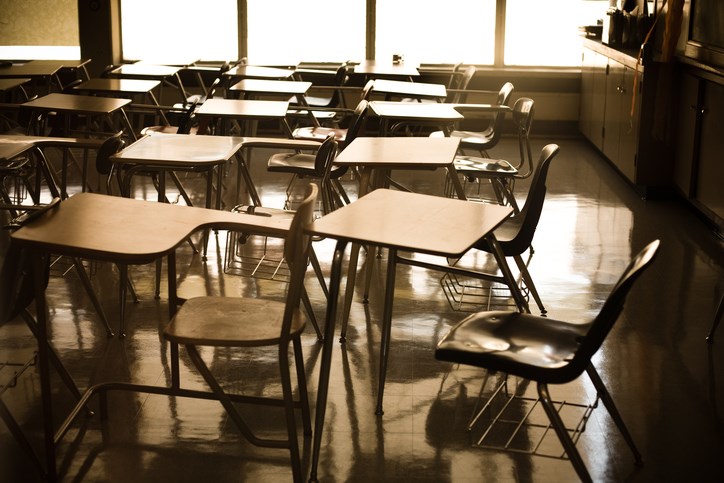This is going to be one of those columns with a bunch of smaller ideas related to education that I try to wrap up into a cohesive whole.
First, I want to ask a question that has been crossing my mind for a while. B.C. has a teacher shortage, one of the B.C. Teachers’ Association calls it “critical” on its website.
“Every day, schools scramble to find enough qualified teachers to provide instruction and meet the needs of diverse learners in the face of increasingly complex and challenging conditions,” the website says. “According to the most recent labour forecasts, 19,610 new K–12 teachers will be needed in B.C.’s public schools in the next decade.
“With school districts already struggling to fill postings, an urgent and comprehensive response is vital to meet current and future staffing demands.”
This shortage is particularly acute when it comes to teachers on call, also known as substitute teachers, for whom there was an “appreciation week” earlier this month.
Given this shortage, and the urgent response called for by teachers, I’m wondering why there aren’t more flexible teacher education programs that would allow working people to make a career transition into teaching without having to take a year off work to study.
Surely at least one post-secondary school in the province could provide a quality teacher training program with a mixture of online, weekend and evening classes. Perhaps there could even be a staged program, in which someone could qualify to be a teacher on call prior to full certification. I am aware of Simon Fraser University’s Professional Linking Program, but it is only for people already working in a school setting.
I realize practicums and in-class experience would need to be completed during traditional working times, but it’s a lot easier and more affordable to take unpaid leave in shorter time chunks than an entire year.
I’m sure there are many qualified professionals across varied fields – trades, drama, physical education, nutrition, etc. – who might consider becoming teachers if the education was a bit more flexible. Post-secondary schools are suffering enrolment declines because of changes to international students; it would seem the perfect time to create a flexible, much-needed program.
In case you missed it, the BCTF also has a new president, Carole Gordon, a former elementary school teacher from the Okanagan who takes office July 1.
My second pondering is about school funding. I note that the Surrey School District’s various interest groups, including teachers, parents and school support staff, have banded together to create an advocacy campaign called Surrey Students Deserve Better to push for more funding for schools. They say classrooms are short of basic supplies, there aren’t enough education assistants, technology is outdated and arts and sports programs are being cut.
Burnaby students were also speaking out earlier this month about cuts in schools, including the potential elimination of two enriched learning programs.
The B.C. School Trustees Association also has a new president: Tracy Loffler. She recently spoke out about the funding issues.
“Across Canada, public schools are in need, and in B.C., districts are facing significant budget pressures and students are feeling the impacts. This is not just about dollars, it is about children's right to quality public education,” Loffler said in a video statement. “In Maple Ridge, in Kamloops, in every corner of our province, schools are doing their best but could be doing so much more for students with increased funding.”
I put in requests to the Richmond District Parents Association and the Richmond Teachers’ Association for information about any similar movements in Richmond, but didn’t hear back before deadline.
My third and final tidbit relates to the coroner’s inquest into the preventable death of University of Victoria student Sidney McIntyre-Starko, 18, from fentanyl poisoning. The inquest jury has recommended changes that affect the K-12 education system, as well as changes to improve ambulance responses to emergencies.
The jury calls for secondary schools to teach students how to perform CPR, how to give nasal naloxone, and how to use automated external defibrillators (AEDs), the Vancouver Sun reported. In addition, students should be taught about the effects and risks of taking drugs.
About 25 people under the age of 19 die from toxic drugs every year in B.C. and unregulated drug toxicity is now the leading cause of unnatural death among youth, statistics from the B.C. Coroner show.
Among people younger than 19, 51 per cent of deaths are in females, most of the deaths occur within private homes and more than half occur among youth using drugs alone, the statistics show.
One such death is too many. I hope schools pick up on these recommendations and run with them.
Tracy Sherlock is a freelance journalist who writes about education and social issues. Read her blog or email her [email protected].
📣 Got an opinion on this story or any others in Richmond? Send us a letter or email your thoughts or story tips to [email protected].
📲 To stay updated on Richmond news, sign up for our daily headline newsletter.
💬 Words missing in article? Your adblocker might be preventing hyperlinked text from appearing.



